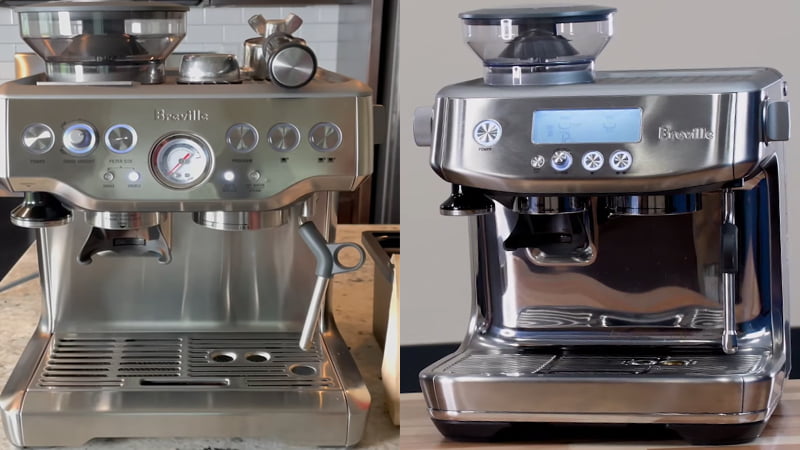The Breville Barista Express vs Barista Pro are noteworthy contenders in the mid-level espresso machine market. There really isn’t much of a difference here, though the latter is indeed an upgraded version. Both look handsome, have a stainless steel conical burr grinder, feature a 15-bar pump, and are wand-equipped machines.
The Breville Barista Pro takes the lead with up to 30 grind settings and a thermojet fast-heating system that can heat up within just 3 seconds. Also, its steam wand has a 4-hole tip for more evenly distributed steam.
The Breville Barista Express, on the other hand, has a set of 16 different grind settings, which is still great. This one can also quickly reach the ideal temperature for brewing espresso or steaming milk with a thermocoil system.
Breville Barista Express Vs Barista Pro: Comparison Chart




Last update on 2025-04-13 / Affiliate links / Images from Amazon Product Advertising API
Breville Barista Express Vs Barista Pro: Differences
The Breville Barista Express narrowly wins the Barista Pro with a score of 4-3. So let’s check out the difference to see if it’s worth spending a few extra bucks on the Barista Pro.
Coffee Flavour
Winner: Breville Barista Pro
Built-in Grinder
These Breville semi-automatic machines have an integrated stainless steel conical burr grinder, saving you both countless hours and money on researching and buying a separate grinder. What’s more, having a built-in grinder saves you counter space because you won’t need to find room for an extra unit. And, after all, grinding beans directly into the portafilter ensures peak freshness, right?
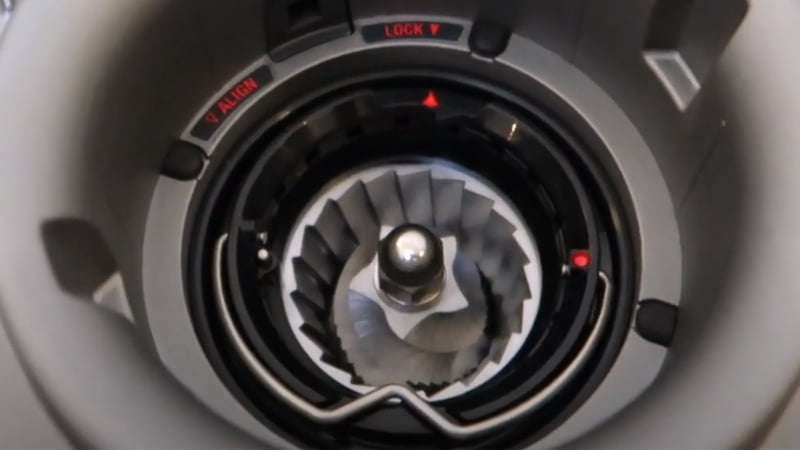
This type of grinder itself is amazing. Unlike a blade grinder, which chops the beans, it crushes them between two abrasive surfaces (or burrs), resulting in a more uniform grind size, which is essential for brewing a balanced cup.
Moreover, this grinder isn’t too noisy during operation. All right, I don’t mean it’s quiet, but at least I’d bet you can brew an early morning cup without a chorus of awakened family members. Its acceptable noise level is also beneficial for settings that demand tranquility, such as offices or reading rooms.
Another big plus is their extensive array of grind settings. The Barista Express has 16 different grind settings, while the Barista Pro is ahead of the game with a whopping 30 settings. Given that the industry average is a mere 6 settings, this is a very large room to experiment. Hence, you can easily dial in the perfect grind for your preferred brewing method to get the perfect shot and never find your grind size stuck between two settings.
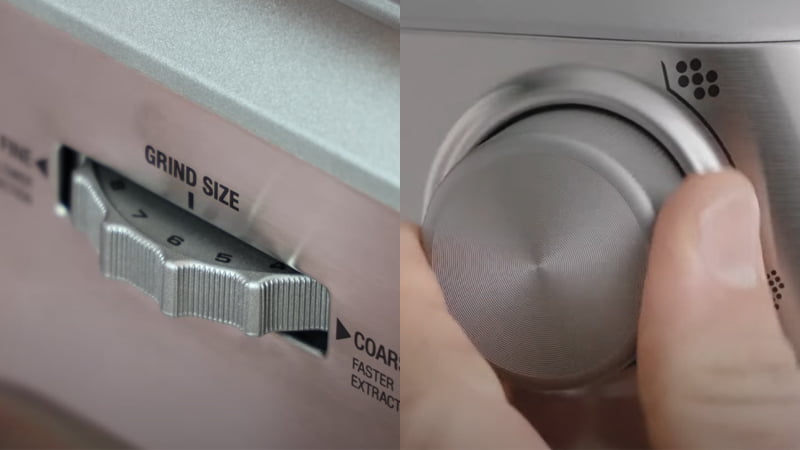
I was glad that these machines came with stainless steel tampers. Well, they weren’t perfect and weren’t as heavy as I expected, but at least they were actually usable, unlike the flimsy plastic tools that come with Gaggia’s entry-level machines. Interestingly, these tampers are magnetic and can be stored on board. Maybe that’s why Breville keeps them light enough so they don’t constantly fall off.
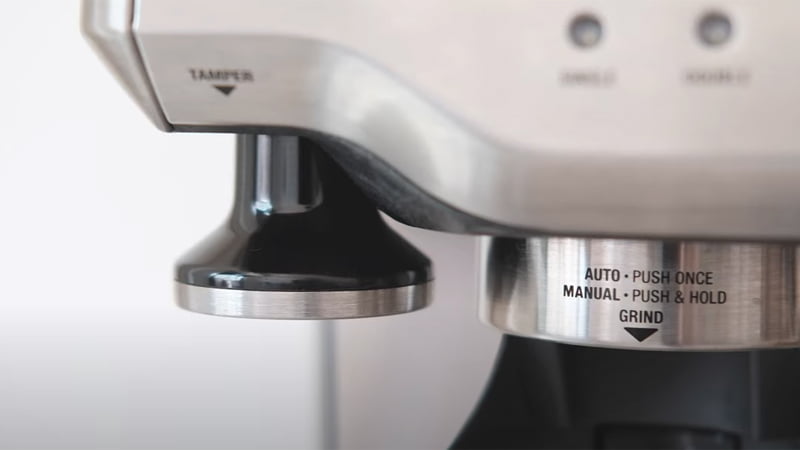
Breville includes a 54-millimeter portafilter with these appliances. It feels well-made and sturdy, and of course, I had no problem with it. But it would be better if it was a 58-mm portafilter used on the Breville Dual Boiler or most commercial espresso machines.
Each of these appliances comes with a set of four filter baskets, including a single and a double shot filter basket for both the pressurized and non-pressurized variations. For the uninitiated, the pressurized filter basket is a boon for novices or those partial to pre-ground coffee since it is forgiving and can produce a decent brew even with a sub-optimal grind. Conversely, the non-pressurized variant demands precision in grind size to pull a tasty shot, making it ideal for skilled baristas.
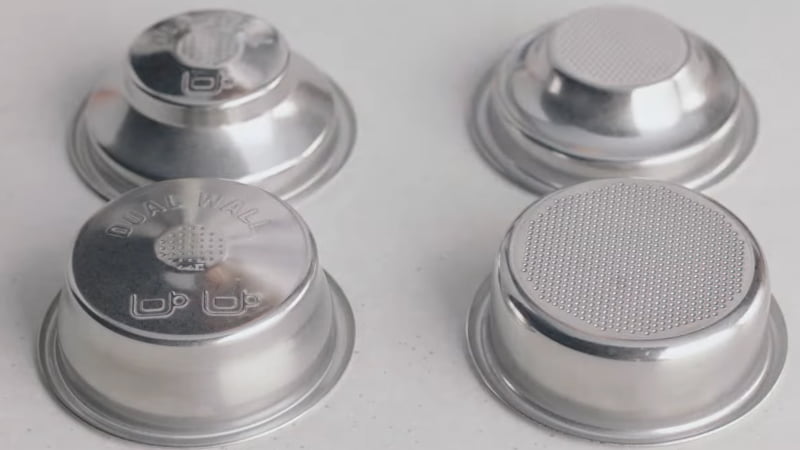
Heating System
These Breville espresso machines have only one boiler, implying that they can’t pull espresso shots and steam milk at the same time. But the fact that they can switch between these two functions quickly and seamlessly should quickly overshadow this drawback.
The Barista Express has a thermocoil heating system that can heat up within 40 seconds, while the Barista Pro can be ready to go in just 3 seconds thanks to its thermojet system. That’s very fast compared to the leisurely 20-minute heating process of traditional boilers found in older espresso machines. That way, they don’t only save your precious time when brewing your go-to caffeinated beverage but also give you hot water rocketly for other tasks, like tea brewing or whipping up hot chocolate, bypassing the tedious kettle boiling phase.
It’s worth noting that their portafilters need to be pre-heated separately for temperature stability during extraction. This can be done by leaving the portafilter locked in the group head while the machine heats up for about 15 minutes and just pulling one or two blank shots (Running hot water through the portafilter without coffee grounds).
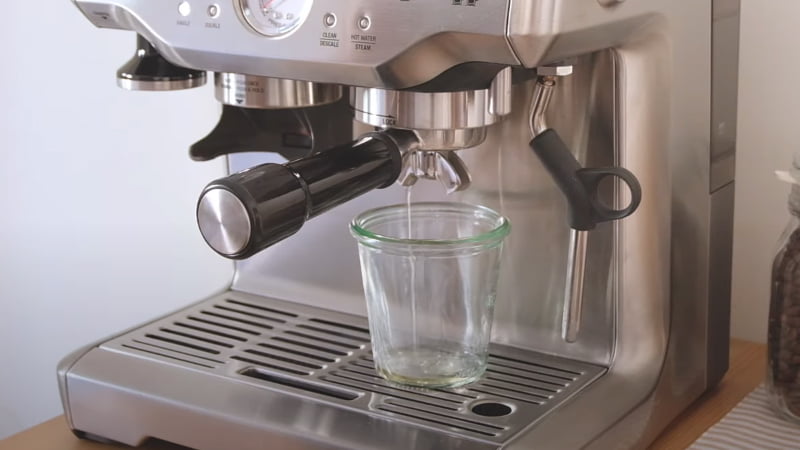
You can pre-warm your mugs to reduce heat loss by placing them on the top of these machines (called a built-in cup warmer). This is especially important to the Barista Express since its wand takes a minute to be ready for steaming milk after pulling a shot, which could lead to a drop in the temperature of the espresso. Yes, this slows things down a bit, but it is essential for precise espresso extraction.
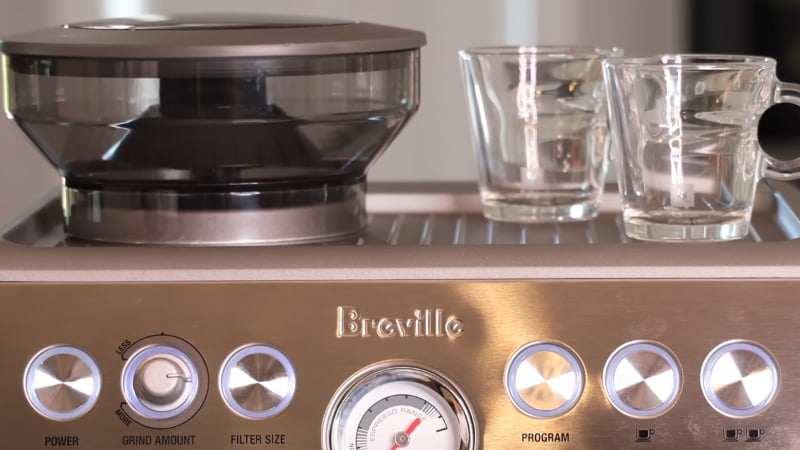
Brewing System
Nowadays, pre-infusion feels like a part of the brewing process in most semi- and super-automatic espresso machines, including these Brevilles, of course. This is the initial phase in the espresso extraction process, where a small amount of water is introduced to the coffee grounds at low pressure before the full-pressure extraction begins.
That way, pre-infusion ensures that the coffee grounds are evenly saturated, which promotes a more consistent extraction. This can reduce the occurrence of “channeling,” where water finds the path of least resistance through the coffee puck, leading to uneven extraction. Also, this bre-brew stage helps to counteract minor tamping inconsistencies by ensuring even saturation before the full pressure hits the coffee puck.
Another aspect I truly appreciate is the adjustable pre-infusion time in both machines, which allows you to tailor it to your specific coffee beans and grind size. It’s an impressive feature, given that the length of the pre-infusion can influence the rate of extraction and, by extension, the taste nuances of the espresso.
Following the initial “bloom” phase, both machines employ their 15-bar pumps to yield the perfect pressure for the uniform and precise extraction process, whereas the gold standard for pulling a quality shot is a 9-bar pressure. And, great, they passed my tests with flying colors. Each espresso shot was robust, rich, and aromatic, topped with a rich, velvety crema on top, just like something from a coffee shop. Of course, factors like grind size and tamping technique play pivotal roles here.
Milk Frothing System
Now is the time to let your inner barista out to play since you will need to steam and froth milk with the manual steam wands. This can initially be a little intimidating for beginners, but it’s a rewarding skill that elevates your coffee game and offers a hands-on experience that many coffee lovers relish.
The Barista Pro stands out with a four-hole tip wand compared with a standard one-hole one on the Barista Express and most home espresso machines. That means the former can distribute steam more evenly, resulting in better aeration and microfoam milk.
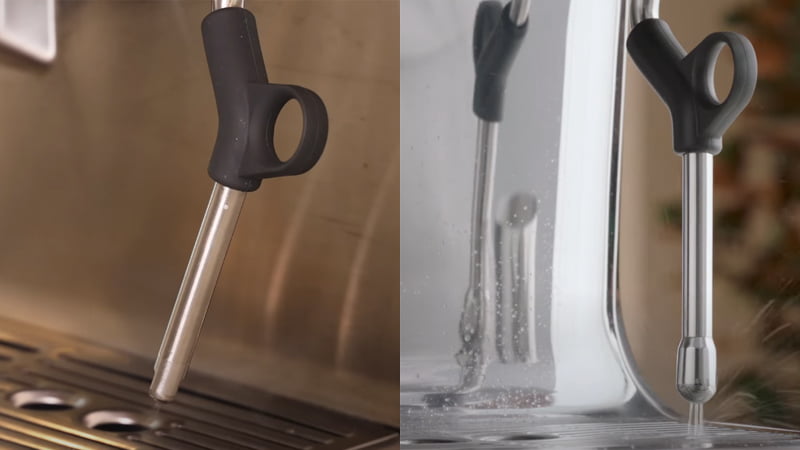
One good thing is that these manual frothing wands can rotate 360 degrees. So regardless of the angle you like to froth milk at, finding the proper position for your pitcher is a breeze. If you’ve ever worked with an espresso machine with a steam wand that can only move in two directions, you’ll see how this 360-degree rotation feature can make a significant difference. Also, they share a rubber grip to ensure that you don’t accidentally burn yourself when adjusting the wand.
Regarding using them, you will need to fill the included stainless steel milk pitcher with cold milk, turn on the machine, and wait until the steam wand is ready. Then insert the wand tip below the surface to introduce air into the milk, position the steam wand in the middle, and then tilt the pitcher to create the desired vortex. Keep going until the carafe is almost too hot to touch (150–155 °F).
All right, isn’t the result what we care most about? I found the Barista Express’s wand a bit less powerful than that of the Barista Pro, but I could still create beautiful, silky microfoam with it. As for the Barista Pro, needless to say, it could quickly produce airy froth for a nice cappuccino and silky microfoam for intricate latte art.
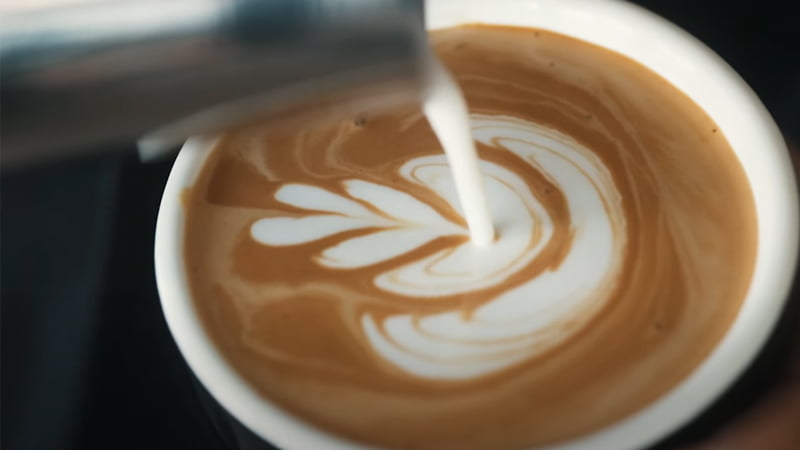
On the downside, there’s not much space in front of these units. In addition, there are no markings on the milk pitcher to tell you how much milk you should pour for each particular drink – this can lead to a bit of leftover steamed milk at the end of the day.
The journey of manually steaming and frothing milk is one of patience, practice, and continual refinement. But with unwavering commitment and time, you can produce results that an automatic frother can’t match. Hard work pays off, right?
Design & Usability
Winner: Tie
Dimensions, Footprint, & Weight
| Breville Barista Express | Breville Barista Pro | |
|---|---|---|
| Dimensions | 12.5 x 13.5 x 16 inches | 8.7 x 13.3 x 16.9 inches |
| Weight | 26 lbs | 25 lbs |
Both of these semi-automatic machines have a polished, upscale look adorned with a brushed metal casing and some stainless steel components, including the portafilter, steam wand, and brew head. But as with the rest of the Breville lineup, their construction is predominantly plastic to maintain a wallet-friendly price point.
Speaking of the control panel, the Barista Pro features a text-only LCD display screen that displays temperature readings, grind size, grinding time, a brewing timer, etc. It is clear and intuitive to make sure you know exactly what you’re doing. On the other hand, the Barista Express includes only some clearly labeled buttons and a pressure gauge located in the center to tell you whether espresso is being extracted properly. Well, I think you’ll need to consult the manual a few times to get used to them.
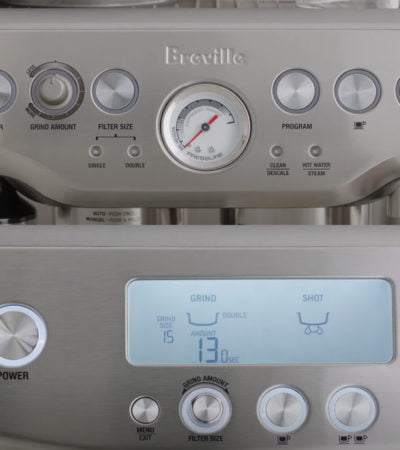
Pre-programmed Coffee Options
| Breville Barista Express | Breville Barista Pro |
|---|---|
| Espresso Hot Water | Espresso Hot Water |
These steam wand-equipped machines only offer one-touch espresso – of course, they do. You will need to roll up your sleeves to froth milk manually and craft some milky drinks. You can adjust a number of settings to your liking, including coffee strength (how much coffee grounds are used), the water temperature, the length of the shot, and, as mentioned above, the length of the pre-infusion interval. But it will take time for you to remember all the combinations of buttons.
Both have a separate hot water spigot next to the steam wand, enabling you to make an Americano without moving your cup. This also gives you a quick way to get hot water for brewing tea for non-coffee drinkers without waiting around for a separate kettle to boil. Do you know what’s even better? There is no milk residue in your tea! You can also use pre-ground coffee with the pressurized filter basket every time you find yourself running out of fresh beans.
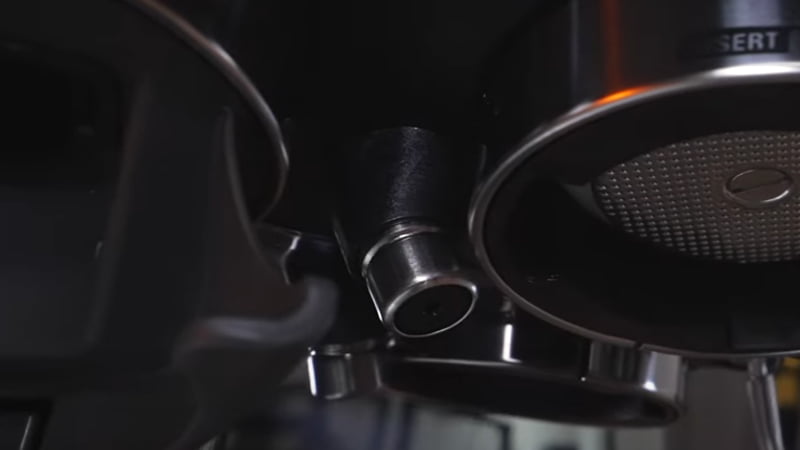
Spout & Cup Clearance
| Breville Barista Express | Breville Barista Pro | |
|---|---|---|
| Spout Type | Dual | Dual |
| Cup Clearance | 4 inches | 4 inches |
Their cup height is fixed at 4 inches and works fine with most cup sizes, even travel mugs. But if you insist on brewing espresso in a taller insulated coffee pot, you have the option to remove the drip tray to have more clearance under the portafilter spouts. It would be better if there were a way to elevate espresso cups to prevent splashing.
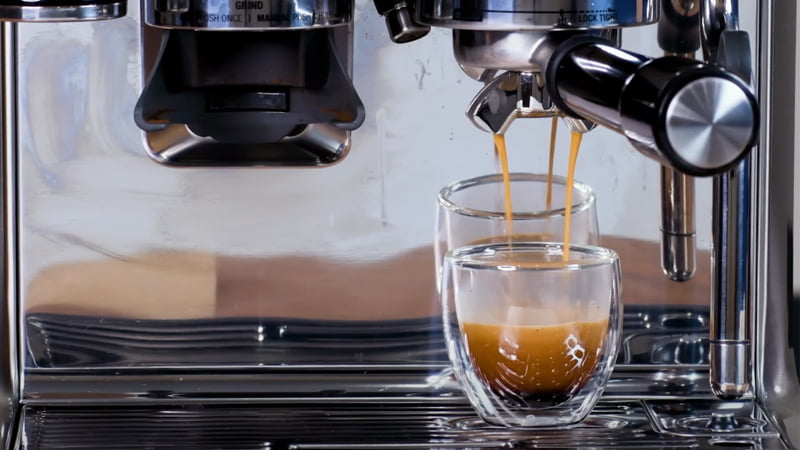
You can also put two cups under their portafilters to get two cups of espresso at once. This x2 function is a game changer on those hectic mornings or when you have to treat a gathering of coffee enthusiasts.
Water Reservoir & Bean Hopper
| Breville Barista Express | Breville Barista Pro | |
|---|---|---|
| Water Reservoir | 2 liter | 2 liter |
| Bean Hopper | 0.24 liter | 0.24 liter |
Their water tanks feature a nice, sturdy handle that makes it easy to remove and refill them. But given their water tanks are fitted to the rear and their bean hoppers are top-loading, you need to think carefully if you intend to fit your next espresso machine underneath overhead cabinets. Just make sure there is enough clearance above to comfortably access and reload them without the need to constantly move the machine.
They both have an airtight cover to prevent your precious coffee beans from being exposed to air, moisture, and sunlight, thus preserving their aroma over the long term. Also, Their tanks can house a water filter to ensure each shot is brewed with impurity-free water and prevent mineral buildup inside the machine, which can reduce its lifespan.
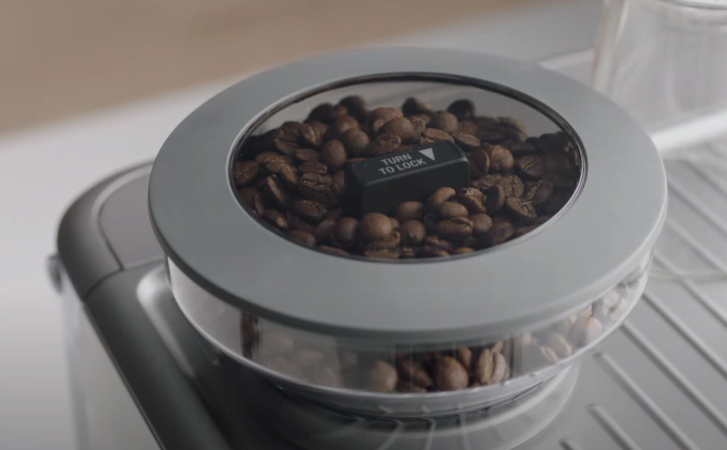
Cleaning & Maintenance
Winner: Tie
Speaking of hygiene, you need to clean their brew groups by flushing them in short bursts before and after each brewing cycle. This is easy, but I’d like this part to be removable for manual cleaning rather than relying on an automatic cycle.
Cleaning the built-in grinder to prevent oil buildup is also a breeze. Just remove the conical bean feeder with one twist to reveal two stainless steel burrs, then take out the inner burr and clean both. There are also some detachable parts that need to be cleaned under running water, such as the drip tray, used grounds box, water tank, portafilter, etc. There is a charming little “floaty indicator” that will tell you when it needs to be emptied.
Regarding cleaning the milk system, these machines run hot water through their steam wand as well, and on your side, a quick wipe with a damp cloth or a wand cleaning tool is all that’s required. These Brevilles will remind you when an automatic descaling cycle needs to be kicked off. And remember, always use the manufacturer-recommended descaler.
Utilities & Other Features
Winner: Tie
Auto Off
The Breville Barista Express vs Barista Pro will automatically go off if they aren’t used for a fixed interval of 3 hours and 30 minutes, respectively. This is a really cool feature, especially for the absent-minded, but I wish it could be tweaked.
Quick Rundown Of Breville Barista Pro
- The Breville Barista Pro delivers third wave specialty coffee at home using the 4 keys formula and is part of the Barista Series that offers all in one espresso machines with integrated grinder to go from beans to espresso in under one minute
- DOSE CONTROL GRINDING: With a single touch, the integrated precision conical burr grinder with dose control delivers the right amount of coffee on demand, for maximum flavor
- OPTIMAL WATER PRESSURE: Low pressure pre-infusion gradually increases pressure at the start and helps ensure all the flavors are drawn out evenly during the extraction for a balanced tasting cup
- FASTER HEAT UP TIME: Innovative ThermoJet heating system achieves the optimum extraction temperature in 3 seconds with the instantaneous transition from espresso to steam
- PRECISE ESPRESSO EXTRACTION: Digital temperature control (PID) delivers water at the right temperature +/- 2°C, ensuring optimal espresso extraction
Last update on 2025-04-13 / Affiliate links / Images from Amazon Product Advertising API
Quick Rundown Of Breville Barista Express
- The Breville Barista Express delivers third wave specialty coffee at home using the 4 keys formula and is part of the Barista Series that offers all in one espresso machines with integrated grinder to go from beans to espresso in under one minute
- DOSE CONTROL GRINDING: Integrated precision conical burr grinder grinds on demand to deliver the right amount of freshly ground coffee directly into the portafilter for your preferred taste with any roast of bean
- OPTIMAL WATER PRESSURE: Low pressure pre-infusion gradually increases pressure at the start and helps ensure all the flavors are drawn out evenly during the extraction for a balanced tasting cup
- PRECISE ESPRESSO EXTRACTION: Digital temperature control (PID) delivers water at precisely the right temperature, ensuring optimal espresso extraction
- MANUAL MICROFOAM MILK TEXTURING: The powerful steam wand performance allows you to hand texture microfoam milk that enhances flavor and enables creation of latte art
Last update on 2025-04-13 / Affiliate links / Images from Amazon Product Advertising API
Product Videos
Related Articles to Breville Barista Pro
- Breville Barista Pro Vs Rancilio Silvia: A Detailed Comparison
- Philips 3200 Vs Breville Barista Pro: An Honest Comparison
- Delonghi La Specialista Vs Breville Barista Pro: Which Coffee Machine Is Better?
- Breville Barista Pro Vs Oracle: A Battle Between Two Breville Semi-automatic Machines
- Breville Dual Boiler Vs Barista Pro: A Detailed Face-Off Comparison
- Breville Bambino Plus Vs Barista Pro: Which One Is Your Favorite Taste?
- Breville Oracle Touch vs Barista Pro Comparison: The Oracle Touch Brews Better & Has More Customization
- Breville Barista Touch Vs Barista Pro: Which Breville Fits You Best?
Related Articles to Breville Barista Express
- Breville Barista Express Vs Rancilio Silvia: How Are They Different?
- Breville Nespresso Creatista Plus Vs Barista Express – Which Machine Is Suitable For You?
- Saeco Incanto vs Breville Barista Express: Is Super-automatic Machines Always Better Than Semi-automatics?
- Gaggia Brera vs Breville Barista Express: Don’t Miss My Review On These 2 Affordable Entry Espresso Machines
- Gaggia Anima Vs Breville Barista Express: Battle Of Two Budget-Oriented Espresso Machines!
- Delonghi Magnifica S Smart vs Breville Barista Express: Comparison Of 2 Very Distinctive Espresso Makers
- An Honest Review Of Breville Barista Express vs Oscar 2: Brew Performance, Milk Frother, And More!
- Breville Barista Express vs Delonghi Magnifica XS: An Honest Review Of My Real Experience With These Machines
- Barista Express 870 vs 875: Is There Any Difference Between These Models? – Quick Comparison
- Delonghi Magnifica S vs Breville Barista Express: Which One Brews Tastier Coffee?
- Breville Duo Temp Pro vs Barista Express: Why you should go for the Barista Express
- Breville Oracle Touch Vs Barista Express: Competition Between 2 Top Breville Machines
- Breville Bambino Plus Vs Barista Express: 4 Hot Features You Need To Know
- Breville Dual Boiler Vs Barista Express: A Wonderful Comparision For You
- Breville Barista Express Vs Delonghi La Specialista: Detailed Comparison!
- Breville Barista Express Vs Philips 3200: A Hands-On Comparison
- Breville Creatista Plus Vs Barista Express: Don’t Miss This Incredible Comparison
- Breville Barista Express vs Infuser: A Battle Between 2 Great Espresso Machine
- Barista Express Vs Oracle: Which Breville Espresso Machine Is Best for You?
- Barista Express Vs La Specialista: A Hot Comparision You Should Not Miss
- Breville Barista Express Vs Gaggia Classic Pro: Which Is A More Suitable Purchase?
- Breville Barista Express vs Bambino: Battle Of the 2 Top Beginner Coffee Machines On the Market
- Barista Express Vs Barista Touch: Which One You Should Choose?
- Breville Barista Express Vs Bambino Plus: Amazing Comparison You Should Read
- Nespresso Creatista Plus vs Breville Barista Express: What Is The Best Choice For Home Use?
- Breville Cafe Roma vs Barista Express: What Is the Best Espresso Machine?
References:
- Breville Barista Pro: www.breville.com/us/en/products/espresso/bes878.html
- Breville Barista Express: www.breville.com/us/en/products/espresso/bes870.html

I’m Floyd J. Alcock, an experienced barista with a deep love for coffee. I curate personalized coffee experiences, guiding customers through diverse flavor profiles and suggesting ideal brewing methods. My extensive knowledge of espresso machines enables me to recommend the best equipment to match specific needs and budgets. Sharing my expertise and passion with coffee enthusiasts brings immense satisfaction. I look forward to continuing my journey of coffee discovery with every customer I serve, fostering connections over a shared love for this magical beverage.
